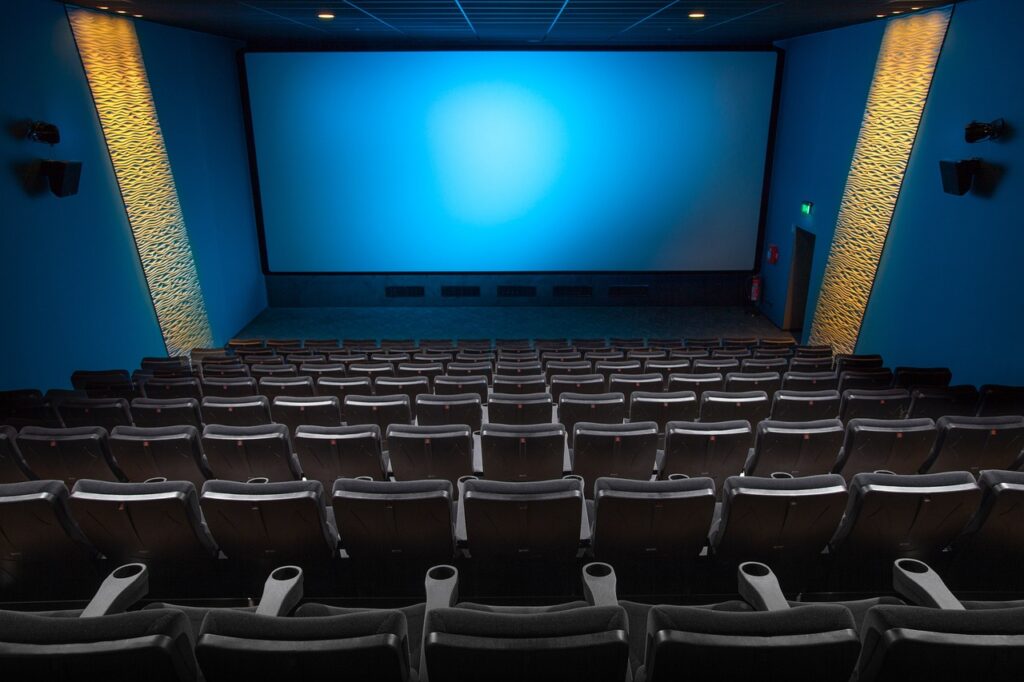The world of cinema, for all its power to reflect and shape our realities, has always grappled with a peculiar shadow: censorship. From the very dawn of moving pictures, certain scenes, narratives, or even entire productions have been deemed too provocative, too dangerous, or simply too ‘immoral’ for public consumption. This isn’t merely a quaint historical footnote; it’s a saga illuminating shifts in societal values, moral panics, and the enduring tension between artistic expression and communal anxieties.
Delving into film history, we uncover a fascinating procession of movies that, for myriad reasons, earned the dreaded ‘banned’ label. These weren’t just obscure artistic experiments; many were mainstream releases or crucial social commentaries that ran afoul of moral guardians, local censors, or powerful lobbying groups. Each prohibition tells a story, not just of the film itself, but of the specific cultural flashpoints it ignited.
What makes a movie so incendiary it’s pulled from screens, its images deemed too potent? Reasons range from overt ual content and racial insensitivity to political dissent, perceived glorification of crime, or even, as we’ll see, a character chewing tobacco. Join us as we journey through infamous instances where cinema pushed boundaries, and society pushed back, highlighting the scenes and narratives that literally got movies banned from theaters.

1. **Stag Films (1896-1930s): The Obscene Origins of Censorship’s Iron Grip**Long before Hollywood’s golden age, a rudimentary form of film was already testing societal acceptance: “stag films,” produced between 1896 and the 1930s. Often crude and always illicit, these films depicted explicit ual acts, shown exclusively at private parties, signaling an early awareness among moral gatekeepers of cinema’s potential for transgression.
The formal hammer of censorship struck later with the Hays Office Code in 1934. This self-regulatory system, born from pressure by religious and conservative groups, codified what was permissible on screen. Stag films, by their “obscene nature,” were the absolute antithesis of the Hays Code’s mandate, becoming a direct catalyst for their prohibition, even if their exhibition was already largely clandestine.
This ban, lasting from 1934 to the 1970s, served as a foundational precedent for how uality would be treated in American cinema. It underscored the pervasive fear of what unregulated visual media might do to public morals, effectively shaping an entire era of filmmaking by drawing clear, uncompromising lines. The ripple effect of this early decision can be traced through countless subsequent battles over what could, or could not, be shown on screen.
2. **All Charlie Chaplin Films (1914-1952): A Censor’s Personal Crusade**Charlie Chaplin, the beloved ‘Little Tramp,’ a global icon, might seem an unlikely target for a blanket ban. His charming antics typically transcended cultural barriers. Yet, in a stark reminder of individual censor power, every single Charlie Chaplin movie was banned in Memphis, Tennessee, from the 1940s to 1956. This wasn’t about explicit content or political messaging; it was a deeply personal crusade.
The architect of this extraordinary prohibition was Lloyd T. Binford, Memphis, Tennessee’s longtime board chief. His objection, as detailed in the context, was not to Chaplin’s cinematic creations but rather to “the popular actor’s private life.” This remarkable instance shows how an artist’s perceived morality, entirely separate from their work, became sole grounds for censoring their entire oeuvre.
Despite Binford’s stringent decree, the allure of Chaplin’s genius proved too strong to be contained. The context provides delightful examples of resistance: “throughout time, the Memphis area outside of the city screened his movies without a single warning.” The 1952 film *Limelight*, for instance, found a home in neighboring West Memphis, Arkansas, strategically bypassing Binford’s watchful eye. This clever circumvention highlights the porousness of local bans when public demand persists.
The most audacious act of defiance occurred on May 2, 1954, when the First Unitarian Church in Memphis bravely screened one of Chaplin’s silent movies to a test audience of 100 people. Binford “replied that the church would ‘violate the law’ if they screened the 1915 movie *A Burlesque on Carmen*.” They proceeded anyway, and the audience “enjoyed it with heavy laughter,” concluding, quite rightly, that “there was nothing ‘morally’ wrong with the picture.” This incident beautifully encapsulates the clash between a singular, autocratic judgment and the collective, discerning experience of an audience.

3. **The Birth of a Nation (1915): Racism’s Cinematic Stain**D.W. Griffith’s *The Birth of a Nation*, released in 1915, stands as one of cinema’s most controversial films. Its groundbreaking technical achievements are overshadowed by deeply entrenched, explicit racist content, particularly its glorified portrayal of the Ku Klux Klan. This film wasn’t just problematic; it was a societal incendiary device, sparking widespread outrage and, critically, numerous bans across the United States.
The immediate public outcry led to swift action in many jurisdictions. The film was “banned in several American cities for its racist content and portrayal of the Ku Klux Klan.” Major urban centers and states, including Chicago, Las Vegas, Denver, Minneapolis, Boston, Pittsburgh, and St. Louis, along with Ohio, Kansas, and West Virginia, and “dozens” of other jurisdictions, recognized the grave danger this film posed, acting against its active propagation of hate.
The reasons for these bans were unequivocally tied to the film’s hateful narrative. By framing the Ku Klux Klan as heroic saviors and perpetuating vicious stereotypes against African Americans, the film actively promoted racial division and violence. Its profound negative impact directly led to decisions to ban it, responding to its potential to incite unrest and solidify prejudiced views within communities.
While some bans were eventually lifted—for instance, it was “Unbanned in 1916 outside of Kansas”—the very fact of these prohibitions highlights a crucial moment in early film censorship. It demonstrated that beyond questions of uality or violence, the dissemination of overt racial hatred, particularly when entwined with a highly influential artistic medium, could compel authorities to intervene. *The Birth of a Nation* remains a powerful, uncomfortable touchstone, reminding us that some content isn’t just ‘offensive,’ but actively corrosive to the social fabric.
4. **Häxan (1922): Delving into Darkness, Nudity, and the Occult**Benjamin Christensen’s 1922 Swedish-Danish silent horror film *Häxan*, exploring the history of witchcraft and demonology, proved far too unsettling for early censors. While revered today for its audacious style and historical insight, at the time of its release, its frank depictions led to an extensive ban that lasted for seven years. Its unique blend of documentary and dramatic reenactment pushed visual boundaries in ways authorities weren’t prepared for.
The context explicitly states it was “banned until 1929 due to the inclusion of torture and nudity.” These elements were recurrent triggers for censorship, deemed offensive to public decency. *Häxan*’s willingness to visually represent the brutal realities of the witch trials, including instruments of torture and scenes of the accused, pushed the boundaries of what audiences were expected to endure, violating the sensibilities of the era.
Beyond the visceral imagery, the film’s thematic core also played a significant role. The context notes its “themes of witchcraft and Satanism may also have been a factor in the ban.” In the early 20th century, artistic explorations of such taboo subjects, especially when presented with vivid realism, provoked moral panic. *Häxan*’s challenge to conventional religious interpretations and its unflinching look at human cruelty made it a prime candidate for suppression.

5. **Babe Comes Home (1927): The Curious Case of Chewing Tobacco**Among the pantheon of banned films, some entries stand out for reasons that now strike us as utterly charming in their absurdity. Such is the case with *Babe Comes Home*, a 1927 film briefly prohibited in portions of the Chicago Metropolitan Area. The reason? A scene depicting legendary baseball player Babe Ruth engaging in a rather mundane, yet apparently offensive, habit.
The context reveals the precise detail: the film was banned “due to scenes of Babe Ruth chewing tobacco and spitting in the film.” In an era increasingly concerned with public health and moral propriety, even the unglamorous habits of a national hero could not escape the censor’s scrutiny. Mrs. Albert L. Stevenson, a censor, articulated the rationale, stating, “the censors do not believe that there is an inherent virtue in chewing tobacco and don’t wish the children in Highland Park to believe that one must chew to achieve fame.”
Thankfully, this particular ban was short-lived, with the context noting, “The ban was later lifted.” The fleeting nature of this prohibition highlights its unusual premise, standing in contrast to the decades-long suppression of other films. It remains a fascinating historical footnote, a whimsical reminder that a baseball star’s on-screen chewing habits could stir enough moral panic to halt a film’s exhibition, showcasing the sometimes-frivolous hurdles in film censorship.
6. **11 Warner Bros. Short Films (The Censored Eleven) (1931-1944): Confronting Animation’s Racist Past**
Animation, often perceived as a realm of innocent fantasy, holds its own difficult history of censorship, particularly concerning racial stereotypes. A striking example is the case of the “Censored Eleven,” a collection of “nearly a dozen animated short films” produced by Warner Bros. between 1931 and 1944. These shorts, including titles like *Hittin’ the Trail for Hallelujah Land*, *Uncle Tom’s Bungalow*, and *Coal Black and de Sebben Dwarfs*, represent a significant episode in the broader cultural reckoning with offensive media.
The comprehensive ban on these films began “since 1968,” specifically when they “were removed from television broadcast rotation in response to the Civil Rights Movement.” This was a pivotal moment, as society began to critically re-evaluate representations of race in media. The caricatured depictions of African Americans, common in cartoons of the era, were rightfully identified as deeply offensive and harmful, leading to a direct acknowledgment of their racist content.
The legacy of the Censored Eleven is complex. While many of these short films have “since fallen into the public domain and have appeared on YouTube,” their official suppression from mainstream distribution continued. The context notes that “restored masters of these short films were prepared for a DVD release that was cancelled due to declining sales for the series with which it was meant to correspond.” This illustrates the ongoing challenge of addressing problematic historical content: how to acknowledge its existence without endorsing its offensive nature.
This institutional withdrawal of the Censored Eleven from widespread circulation underscores a crucial shift in media responsibility and public sensitivity. It marked a definitive point where the entertainment industry, under significant societal pressure, began to confront its own complicity in perpetuating harmful stereotypes. These films serve as potent reminders of how historical biases can be ingrained in popular culture, and how collective action, spurred by movements like the Civil Rights era, can lead to their necessary removal from everyday viewing.
Continuing our deep dive into the fascinating, and often frustrating, history of cinematic prohibition, we now turn our attention to films that challenged notions of public morals, glorified illicit activities, ventured into controversial educational realms, or grappled with evolving understandings of racial prejudice. These next six instances further illuminate the complex interplay between art, audience, and the powerful impulse to control what we see on screen, demonstrating how the very fabric of censorship adapted to confront new and persistent societal concerns. The evolution of these bans showcases a continuous struggle for artistic freedom against shifting cultural sensitivities.
7. **Scarface (1932): When Crime Paid Too Well**Howard Hawks’ original *Scarface*, released in 1932, is a towering achievement in gangster cinema, a raw and unflinching look at the brutal rise and fall of a Prohibition-era crime lord. Yet, for all its artistic merit, the film landed squarely in the crosshairs of censors across America, not for its violence, but for a far more insidious reason in their eyes: the perceived glorification of crime. It presented a compelling, albeit dark, narrative that authorities feared might inspire rather than deter.
This concern was so pervasive that the film found itself “banned in five states and five other cities.” In an era still grappling with the real-life menace of organized crime and the romanticized figures of gangsters, the idea that a film might inadvertently make such a life seem attractive was deeply unsettling to moral guardians. The power of cinema to shape public perception, especially among impressionable audiences, was a recurring anxiety.
*Scarface*’s prohibition highlights a significant battleground in early censorship: the portrayal of antisocial behavior. Censors worried less about simply showing crime and more about the narrative framing—whether the criminals were punished sufficiently, or whether their illicit gains seemed too appealing. The film’s very impact, its visceral energy, ironically contributed to its initial suppression, making it a landmark in the ongoing debate about cinema’s moral responsibility.

8. **Ecstasy (1933): European Eroticism Confronts American Morality**Gustav Machatý’s 1933 Czechoslovakian film *Ecstasy* arrived on American shores with a reputation that preceded it, destined to collide with the prevailing puritanical sensibilities of the Hays Code era. This wasn’t merely a film that flirted with suggestive themes; it broke significant ground with its frank, if artistically framed, depictions of uality, proving far too explicit for the American censor boards of the time. The film’s European origin likely contributed to its disregard for the strictures then forming in Hollywood.
Consequently, *Ecstasy* faced a prolonged ban in the United States, remaining out of legal circulation “from 1933 to 1937.” This four-year suppression speaks volumes about the shockwaves its “erotic content” sent through American moral gatekeepers. The film notably featured Hedy Lamarr in a swimming scene and depicted an uninhibited portrayal of female which were utterly revolutionary and, for censors, unforgivable for the period.
The protracted battle over *Ecstasy* became a litmus test for the nascent Hays Code’s power and its determination to control explicit uality in film. It underscored a fundamental difference in cultural attitudes towards nudity and sexual expression between European and American cinema. The ban was a clear statement that, regardless of artistic intent, certain visual boundaries were considered inviolable in the quest to uphold public decency, further cementing the restrictive legacy of the time.
9. **Tomorrow’s Children (1934): When Social Commentary Incites Moral Panic**Released in 1934, *Tomorrow’s Children* tackled controversial social themes with a directness that proved profoundly unsettling to censors, quickly earning it widespread prohibition. Its narrative dared to delve into issues that challenged the era’s deeply held, often conservative, views on family, eugenics, and societal welfare, venturing into territory deemed too provocative for public consumption. This film exemplifies how social commentary, when perceived as challenging foundational societal norms, could trigger severe backlash.
The immediate backlash was significant, with the film being “first banned” across “the entire states of Virginia and Kansas.” The reasons cited were broad yet damning: its content was described as “immoral and tending to incite crime and corrupt public morals.” These sweeping condemnations reflect a prevailing fear that the film’s narrative, whatever its specific focus, could destabilize social order and encourage deviant behavior, making it a prime target for suppression.
The controversy intensified when New York followed suit, banning the film “later by New York in March 1938” on similar grounds. The repeated application of vague but powerful charges like “corrupt public morals” demonstrates how easily contentious social issues could be framed as existential threats by censorship boards. *Tomorrow’s Children* therefore stands as a poignant reminder of how films aiming to provoke discussion or highlight societal problems often faced the severest forms of censorship, deemed too dangerous for the public’s moral well-being.
10. **The Birth of a Baby (1938): An ‘Educational’ Film Deemed ‘Terrible’**In 1938, the documentary *The Birth of a Baby* ventured into the deeply personal and often private realm of childbirth, aiming for an educational purpose. However, its candid approach to a subject then considered taboo for public display resulted in widespread bans, highlighting a profound societal discomfort with explicit biological realities, even in an instructional context. This film’s fate reveals the fine line between what is deemed informative and what is deemed indecent.
The bans were comprehensive, extending “all across Pennsylvania by the state’s Motion Picture Censors, in New York City by the state of New York’s censors, and in Cincinnati, Ohio by the city’s manager Clarence O. Sherrill.” The reasons given ranged from the film being reported as “non-educational” to its lack of certification by the state’s Board of Motion Pictures Censors. The formal mechanisms of censorship were deployed to block its exhibition.
Perhaps the most telling condemnation came from Cincinnati Police Department’s chief Eugene T. Weatherly, who, after viewing the film, described the picture as “positively terrible.” This visceral reaction underscores the powerful emotional and moral objections films depicting such intimate human experiences could provoke. *The Birth of a Baby* became an emblem of how even ostensibly educational content could be censored when it dared to visually present what society preferred to keep behind closed doors, blurring the lines between instruction and perceived indecency.
11. **8 Popeye the Sailor short films (1933-1952): Racial Caricatures and a Silhouette of Scandal**The beloved figure of Popeye the Sailor, an icon of early animation, also found himself entangled in the complex web of censorship, with “a total of eight short films in the series” facing significant bans. These prohibitions, enacted “since the 1990s,” underscore a crucial shift in societal tolerance and media responsibility, far removed from the simple moralizing of earlier eras. It highlights how evolving cultural awareness can retroactively apply critical scrutiny to historical content.
The primary reason for their withdrawal was their inclusion of “propagandistic stereotypes, particularly in regards to the Japanese people, that may be perceived as insensitive to contemporary audiences.” Dating from the World War II era, these cartoons, like much popular media of the time, reflected and perpetuated wartime prejudices. The decision to ban them from television reflected a growing consciousness that such portrayals were not merely outdated, but actively harmful and offensive.
Adding another layer to their controversial nature, one specific short film was also removed for “suggestively imaging a woman’s silhouette in the shower.” This dual reason—racial insensitivity and ual suggestiveness—illustrates the multifaceted nature of media policing, targeting both socially harmful stereotypes and content deemed inappropriate for a general, often young, audience. It’s a compelling example of how different moral and ethical frameworks converged on a single piece of media.
While some of these shorts, like *Spinach Fer Britain* and *Seein’ Red, White ‘N’ Blue*, briefly reappeared on anthology series such as *The Popeye Show* on Adult Swim, their broader distribution remained restricted. The fact that one was “removed for its potentially offensive stereotyping and suggestively imaging a woman’s silhouette in the shower” even after a brief return, signifies an ongoing commitment to re-evaluating and often restricting content that no longer aligns with contemporary social values, reinforcing the idea that cultural standards are constantly in flux.

12. **Gone with the Wind (1939): A Modern Reckoning with a Classic**Among the annals of banned films, few possess the iconic status of *Gone with the Wind*. A cinematic juggernaut that captured the imaginations of millions upon its 1939 release, its recent and temporary removal from HBO Max in 2020 serves as a stark, modern illustration of how censorship continues to evolve. This wasn’t a governmental decree from a Hays Code administrator but a streaming platform’s response to an undeniable cultural awakening, fundamentally reshaping the discourse around problematic historical narratives.
This temporary withdrawal was made “in response of George Floyd protests,” a seismic cultural and social movement that compelled institutions to re-examine their complicity in perpetuating systemic racism. *Gone with the Wind*, for all its cinematic grandeur, is undeniably imbued with romanticized depictions of the antebellum South and problematic racial stereotypes that, in the intensified climate of 2020, became untenable for uncontextualized presentation on a major platform.
The nature of this “ban” is particularly insightful. It wasn’t a permanent legal prohibition but a considered, temporary removal followed by its return with disclaimers and contextualization. This approach reflects a nuanced, contemporary understanding of censorship, moving beyond outright suppression towards a more educational and responsible presentation of culturally sensitive material. It signals a shift from simply removing content to actively engaging with its historical baggage.
*Gone with the Wind*’s moment of removal encapsulates the ongoing, often painful, process of re-evaluating cultural touchstones through a modern lens. It demonstrates that the battle over what is acceptable on screen is not static, nor is it confined to past generations of censors. Instead, it’s a dynamic, societal conversation, reflecting deep cultural shifts and our collective efforts to reconcile past artistic achievements with present-day ethical standards. This instance perfectly illustrates how even films once thought immutable can be called into question as society evolves, showcasing the ever-present, ever-changing nature of what gets a movie banned, or at least, temporarily pulled from the screen.
Our journey through the landscape of cinematic bans, from the overt obscenity of early stag films to the nuanced contextualization now required for historical epics, reveals a truth as enduring as the silver screen itself: the moving image holds immense power. This power, to inspire, provoke, or offend, has consistently drawn the scrutiny of those who seek to define the boundaries of public taste and morality. Each film that faced prohibition, each scene deemed too daring, serves as a testament to the perpetual tension between artistic freedom and societal control. As our culture continues to evolve, so too will the reasons and mechanisms by which we decide what is, and isn’t, fit for our screens, ensuring this fascinating saga of censorship will undoubtedly continue to unfold for generations to come. The history of banned films is, in essence, a mirror reflecting our own changing values and collective anxieties about the images that define us.











